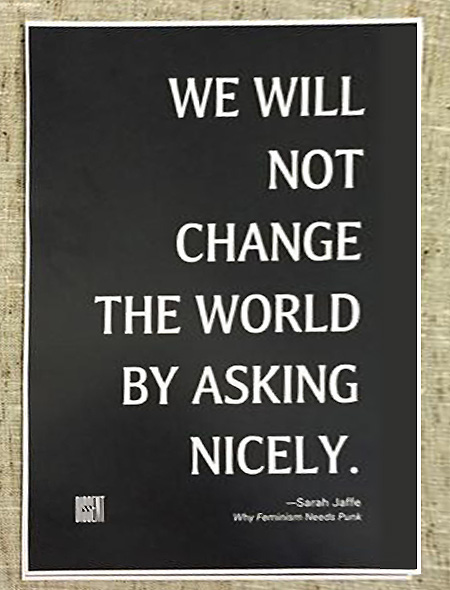August 2015
The Uses of Radicalism
This interview with radical historian Eric Foner is full of goodness. The focus is on Reconstruction and its interpretation, and this bit on the function of radicalism speaks clearly to the present:

“The abolitionists show you that a very small group of people can accomplish a lot by changing the discourse of the country. After the Civil War, everybody claimed to have been an abolitionist. But they weren’t!
There weren’t a whole lot of abolitionists before the war. There were a few beleaguered individuals scattered about, in upstate New York, for example. There were only a couple dozen abolitionists in New York City!
Now, there was a free black community, they were very militant, and you could say they were abolitionists, but I’m talking about the organized abolitionist movement. That was very small. Nonetheless, they managed to actually accomplish quite a bit. They pioneered the use of the media of that time — the steam press, the telegraph, the petitions, the traveling speakers — to change public discourse. If you want to learn something from the abolitionists, that’s what you learn. The first thing to do is intervene in public discourse.
And the Occupy movement — success, failure, gone, still around, whatever you want to think about it — it changed the public discourse. It put this question of the 1 percent and the 99 percent, inequality, on the national agenda. That doesn’t mean they’re going to do much about it in Washington, but it is now part of our consciousness, just as by 1840 the abolitionist movement put the issue of slavery on the agenda in a way it had not been. Now, it took twenty years for anything to happen, but I think that’s something to learn from them, how they managed to do that.
Here’s the point. I am a believer in the abolitionist concept — that the role of radicals is to stand outside of the political system. The abolitionists said, ‘I am not putting forward a plan for abolition, because if I put forward a plan, people are just going to be debating my plan. “Oh, it’s going to be two years, five years, seven years.” No: I’m putting forward the moral imperative of dealing with slavery.’ And if people are convinced of that, then politicians will come up with a plan to do it. That means politicians are eventually going to pick up those ideas and use them in other ways and turn them into political strategies.”
Suicide Rate for Black Children Surges
Three months ago, I read a story in the NY Times with a chilling lede: the suicide rate among black children has nearly doubled since the early 1990s, while the rate for white children has declined.
The story haunted me, and when the Harper’s Index repeated the statistic it prompted me to track down the source. It turns out the study cited uses data from the Centers for Disease Control, data that is easily accessible via the web. So I created a chart to show the change over time. The data is spiky but the overall trend is clear and horrifying.
Here is a csv of the chart’s data drawn from the CDC Fatal Injury Reports, 1999 - 2013 and 1981 - 1998.
Woman gets shot during a confrontation with police in East Pasadena
http://t.co/IuuTrOwHZS
— NBC Los Angeles (@NBCLA) July 11, 2015



